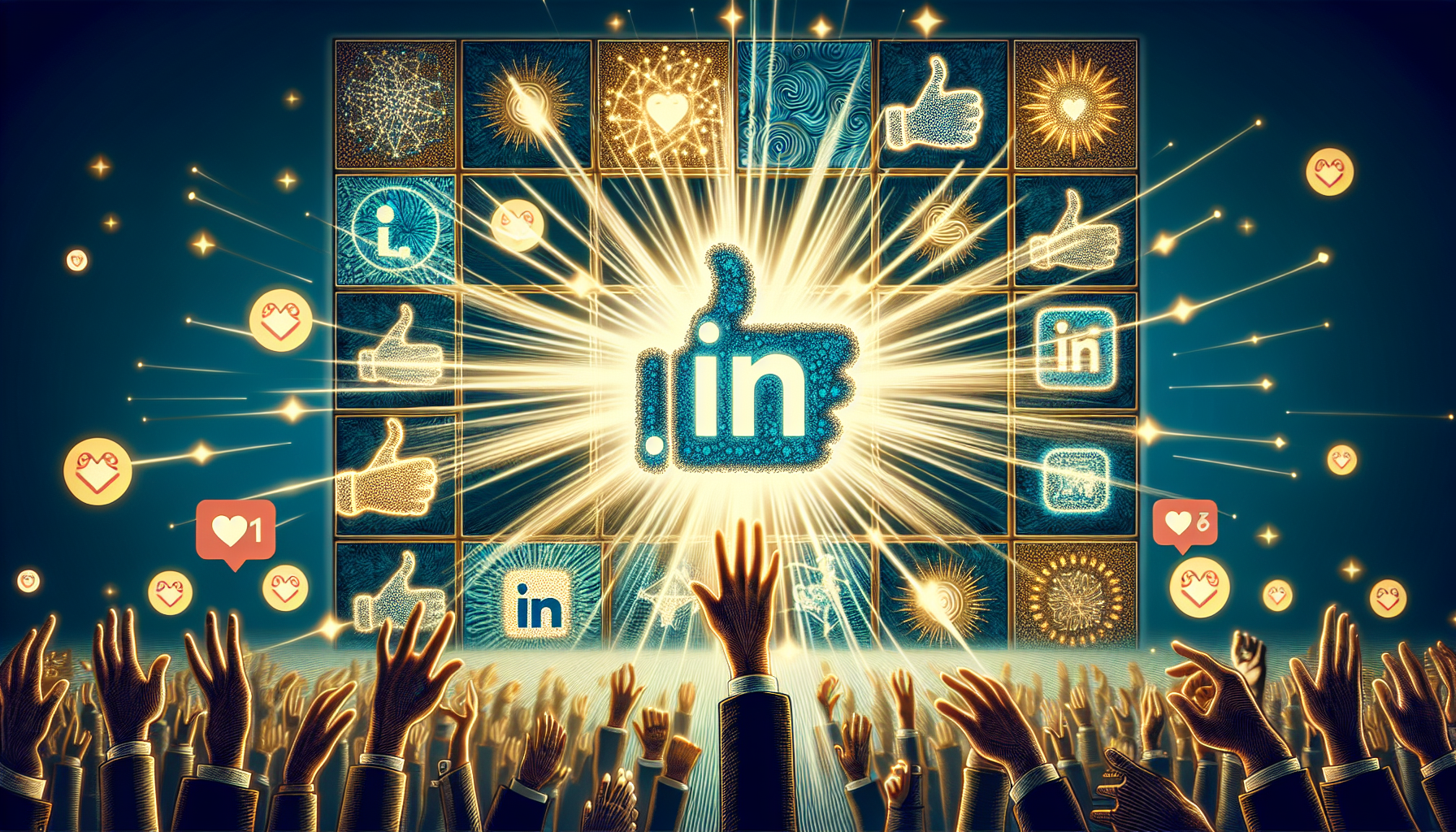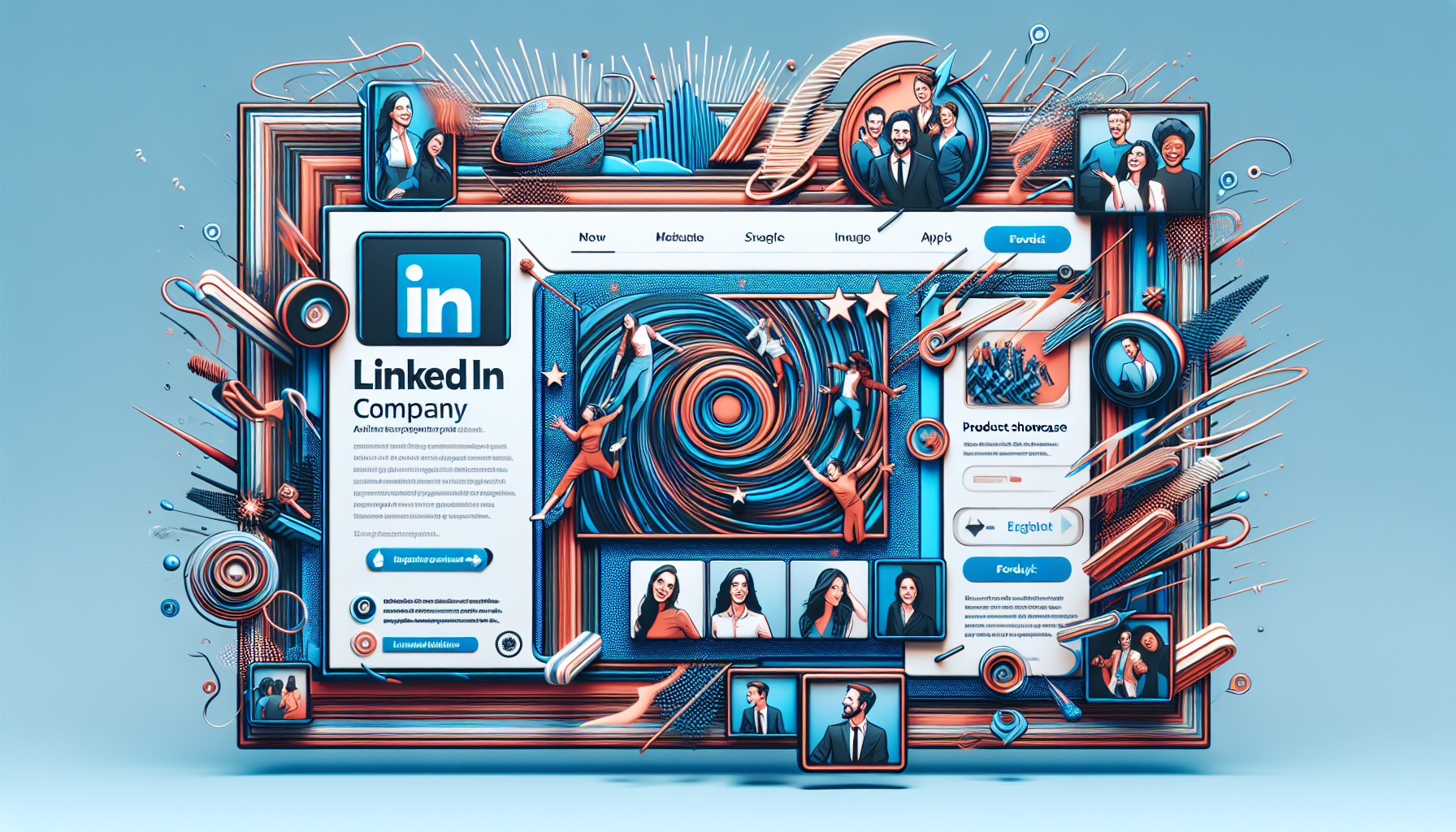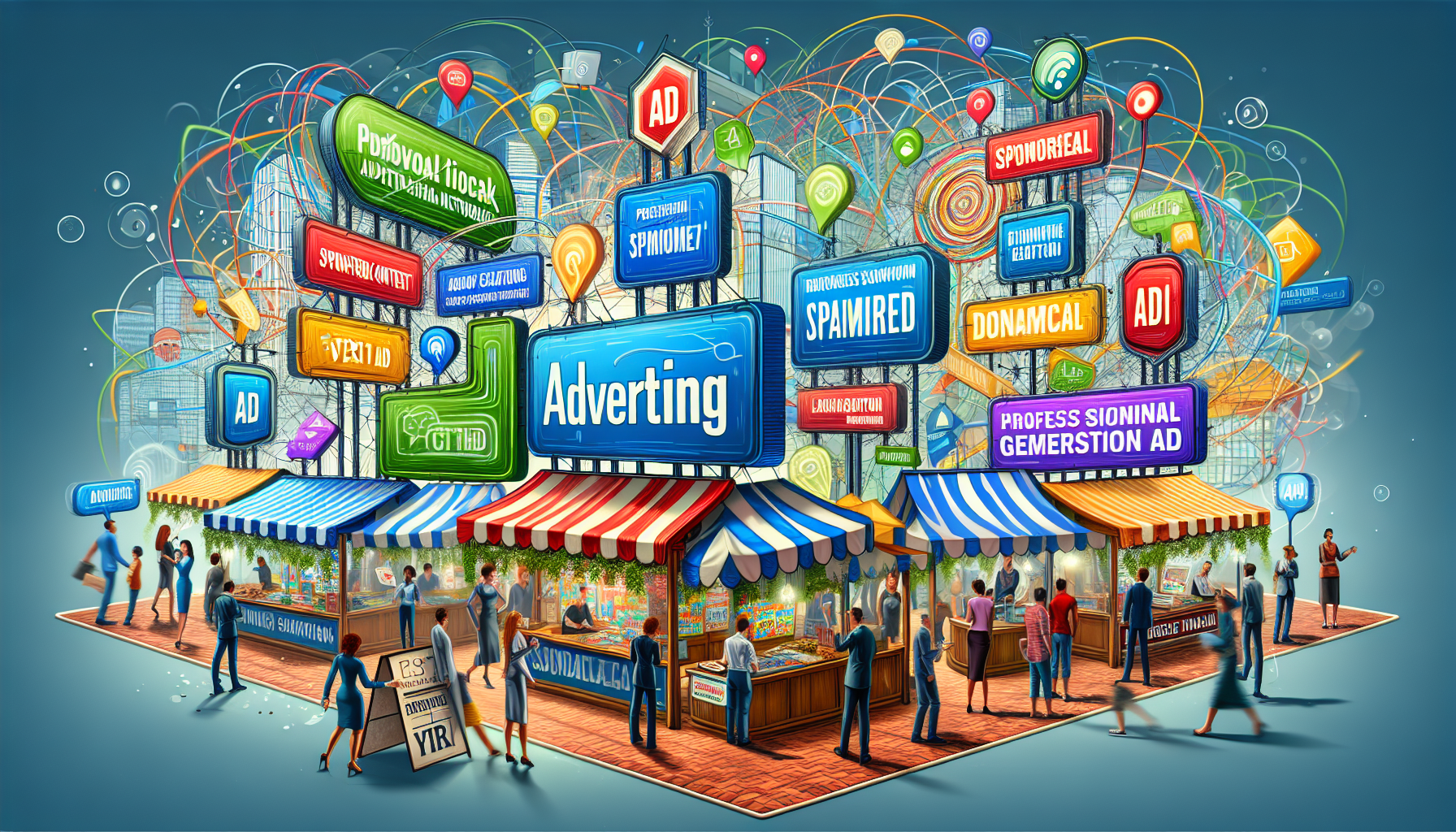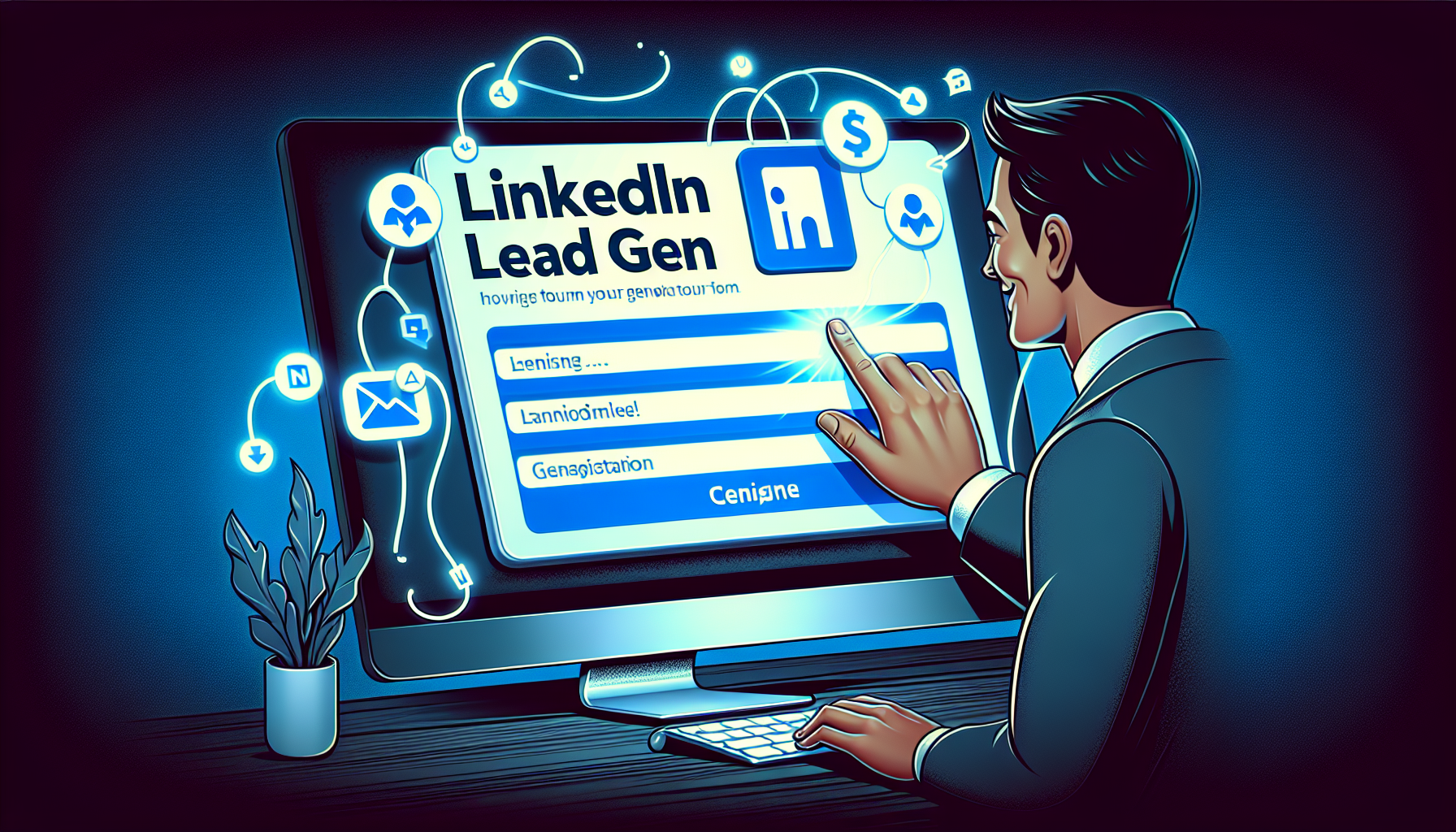Enhancing LinkedIn brand awareness can transform your professional footprint. This article offers practical tips for increasing your visibility and influence on LinkedIn, setting you up for brand success without overwhelming details or sales pressure.
Key Takeaways
-
LinkedIn is a significant platform for brand awareness, offering tools for content distribution, lead generation, and demonstrating industry expertise through thought leadership content.
-
Effective LinkedIn Company Pages require attention to visual branding with an engaging banner and logo, a compelling About section, and the strategic showcasing of products and services using various content formats.
-
A successful LinkedIn strategy includes creating targeted content, utilizing rich media, adjusting based on ad performance metrics, and integrating LinkedIn with an overarching social media marketing agenda for cohesive brand messaging.
Understanding LinkedIn's Impact on Brand Awareness

LinkedIn is not just another social media platform; it’s a powerful tool for social media branding. When utilized effectively, it can dramatically enhance your brand’s recognition and perceived value. Let’s paint a picture. Imagine you’re a software company. You have a revolutionary product, but your audience doesn’t perceive the value yet. What do you do? You share thought leadership content on LinkedIn. This content showcases your industry expertise, demonstrating value to your audience and increasing brand awareness.
But it doesn’t stop there. LinkedIn supports your brand marketing efforts by efficiently distributing content and generating leads, adding immense value to your social media branding strategy.
Crafting a Magnetic LinkedIn Company Page

Your LinkedIn Company Page is the storefront of your brand on the platform. It’s where your brand values, voice, and identity come to life. A magnetic LinkedIn Company Page requires a visually appealing banner and logo, an engaging About section, and showcasing products and services effectively.
Let’s dive into each of these components.
Designing a Visually Appealing Banner and Logo
First impressions matter, and on LinkedIn, your logo and banner are the first things people see. A profile image, typically your company logo, is crucial as it increases visitor engagement. But the banner is where your brand gets the opportunity to spread its wings. It’s your creative space, your canvas to convey what your brand is about.
The optimal dimensions for a cover image in a LinkedIn article are 1920 by 1080 pixels, with the maximum image size allowed being 7680 by 4320 pixels. So, ensure you make the most of this space with a visually appealing banner that encapsulates your brand’s identity.
Crafting an Engaging About Section
Your About section is where your brand’s story unfolds. This section should articulate your company’s mission and outline the principal goals that guide your business. It’s also the place to convey your company’s values that underscore your organizational culture and business ethos. But remember, it’s not just about what you do—it’s also about what sets you apart.
Highlight your brand’s unique selling proposition to differentiate your offerings from the competition in the industry. And to engage visitors and enhance searchability, include relevant keywords that align with your brand’s services and industry. Following your brand guidelines will ensure consistency and recognition across all platforms, making it easier to establish your brand online.
Showcasing Products and Services
Showcasing your products and services is more than just listing what you offer. It’s about telling a compelling story that resonates with your audience. Using a variety of content formats such as:
-
articles
-
images
-
videos
-
documents
can effectively showcase your offerings on LinkedIn.
Remember, original content is essential for B2B companies on LinkedIn to attract other businesses and build client trust.
Tailoring Content for Professional Engagement

Content is king, but context is queen. On LinkedIn, it’s not just about what you say—it’s also about how, when, and to whom you say it. Let’s explore three key strategies for tailoring content for professional engagement: sharing industry insights and trends, leveraging rich media posts, and creating regular updates and articles.
Sharing Industry Insights and Trends
Staying ahead of the curve means keeping a pulse on what’s trending in your industry. Sharing insights and trends on LinkedIn not only showcases your brand’s trustworthiness and authority but also indicates your strong understanding of your industry. LinkedIn Pulse is a useful tool that can provide personalized content feeds, offering you valuable industry insights.
Additionally, participating in LinkedIn groups allows industry members to engage in discussions, share perspectives, and stay updated on industry developments. Remember, visibility is key, so make sure you feature industry-centric content such as informative articles and how-to guides through employee engagement on your LinkedIn Pages.
Leveraging Rich Media Posts
In today’s fast-paced digital world, attention spans are short. To break through the noise and captivate your audience, you need to leverage rich media social media posts. Short-form videos, for instance, are dominating social media platforms, including LinkedIn, due to their high engagement rate on various social media channels and social media networks. Crafting an engaging social media post with rich content like short-form videos can significantly boost your social media presence.
Diversifying your content types with polls, infographics, and links can also enhance your LinkedIn strategy by tapping into audience engagement preferences.
Creating Regular Updates and Articles
Consistency is key to building a loyal and engaged following on LinkedIn. Using a content calendar helps plan out posts efficiently, ensuring a balanced and organized approach that saves time and prevents content repetition. Maintaining a consistent posting schedule through advanced scheduling can improve marketing efficiency and boost audience engagement. And remember, it’s not just about the words. LinkedIn articles can be enhanced with media such as images and videos to engage audiences more effectively. Make sure to add rich media content via URL sharing from supported platforms like YouTube and SlideShare.
When using third-party images, respect the image owner’s conditions and provide proper attribution. Timing is also crucial. Posting B2B marketing content at peak traffic times on LinkedIn can significantly enhance engagement and content performance.
Networking and Community Building on LinkedIn

Networking and community building are at the heart of LinkedIn. It’s not just about promoting your brand—it’s also about engaging with your industry and building meaningful relationships.
Let’s delve into the three main strategies for networking and community building: engaging with relevant groups, connecting with influencers and thought leaders, and encouraging employee advocacy.
Engaging with Relevant Groups
LinkedIn Groups are a goldmine for networking and community building. They provide a platform for:
-
sharing ideas and trends within the industry
-
actively participating in groups aligned with your brand’s niche
-
showcasing your thought leadership without direct promotion
But it’s not just about showcasing your expertise.
Engaging in LinkedIn groups related to your company’s industry can also help establish credibility and foster relationships with potential customers. Plus, it’s a great way to stay updated with industry trends and news.
Connecting with Influencers and Thought Leaders
Influencers and thought leaders can amplify your brand’s message on LinkedIn. LinkedIn’s Advanced Search can be used to identify and connect with global experts and thought leaders relevant to your brand. But remember, successful partnerships require continuous engagement and providing exclusive opportunities and support.
Your employees can also play a significant role in extending the reach of influencers’ content by signaling its value to a broader audience. Collaborating with key influencers can also cater to niche audiences on LinkedIn, resulting in increased engagement for your brand.
Encouraging Employee Advocacy
Your employees can be your brand’s biggest ambassadors on LinkedIn. Building an employer brand involves showcasing company culture and harnessing employee advocacy. By highlighting employees’ achievements, projects, or unique skills, you can boost employee advocacy.
This not only leads to higher engagement but also contributes to a stronger, more coherent work culture.
Amplifying Reach with LinkedIn Advertising

LinkedIn advertising can significantly enhance your brand’s visibility and reach the right audience. Let’s explore how you can amplify your reach with LinkedIn advertising, using sponsored content and direct sponsored content, text ads and dynamic ads, and lead generation forms.
Sponsored Content and Direct Sponsored Content
LinkedIn Sponsored Content allows you to place your brand in front of key decision-makers across various industries, enhancing brand visibility. It offers various formats, including:
-
Single image
-
Video
-
Carousel
-
Event
-
Document ads
These formats allow you to present your content in engaging and interactive ways directly within the professional feed.
Direct Sponsored Content provides a tailored targeting approach, enabling you to craft personalized ads that target specific groups without the need for posting on your company’s LinkedIn Page. Utilizing LinkedIn’s Matched Audiences feature allows for precision targeting by demographics, enhancing the likelihood of engaging with influencers and thought leaders.
Text Ads and Dynamic Ads
Text Ads and Dynamic Ads offer unique opportunities to test your messaging at a high frequency and low cost.
Text Ads:
-
Displayed on the desktop version of the platform
-
Suitable for testing messaging
-
Can link to a variety of company resources
-
Showcase different aspects of your business to a professional audience
Dynamic Ads, when combined with Matched Audiences or custom audiences, become highly relevant to audience interests, making them effective for targeting and retargeting users.
Lead Generation Forms
One of the most powerful tools in LinkedIn’s advertising arsenal is Lead Generation Forms. They facilitate the collection of valuable prospect information through pre-filled forms, making the process of capturing leads more efficient for advertisers.
Analyzing and Optimizing Your LinkedIn Strategy
Analyzing and optimizing your LinkedIn strategy is crucial for maximizing your brand awareness efforts. Let’s delve into three key strategies: tracking key performance metrics, gaining actionable insights from audience demographics, and adjusting tactics based on performance.
Tracking Key Performance Metrics
Key performance metrics provide a quantifiable measure of your LinkedIn strategy’s effectiveness. Metrics like:
-
Reach
-
Engagement
-
Follower growth
-
Brand mentions
reflect direct audience interaction with your brand’s content. Utilizing third-party tracking mechanisms, like URL parameters within Direct Sponsored Content, can also allow for precise monitoring of web page visits.
Gaining Actionable Insights from Audience Demographics
Understanding your audience is key to creating content that resonates. LinkedIn’s demographic analytics tools can provide insights on industry, job titles, and locations of your audience, helping you identify key audience segments. Tailoring content based on these demographics can lead to content that better resonates with followers, enhancing engagement.
Understanding LinkedIn’s audience demographics, which often include older individuals with higher incomes, allows for the creation of content that aligns with these users’ preferences, thus increasing the effectiveness of engagement strategies.
Adjusting Tactics Based on Performance
Making data-driven optimizations to your advertisement content is key to maximizing brand awareness on LinkedIn. Direct Sponsored Content can be used to create different variations of ads, allowing you to test which elements perform best with your target audience. Analyzing engagement with various ad elements such as text, images, and calls-to-action can help you refine your advertising tactics for better performance.
Integrating LinkedIn with Your Overall Social Media Marketing Strategy
LinkedIn is a powerful tool, but it’s not a standalone solution. Make sure to integrate it with your overall social media marketing strategy. This will help ensure a cohesive approach across all platforms. A uniform brand identity across all social media platforms can increase brand recognition and the likelihood of purchase, as well as commitment to a long-term relationship with customers.
Amplifying authentic user-generated content aligned with brand values and maintaining a consistent brand voice is an effective strategy for effective social media branding, showcasing brand authenticity and building trust among social media users. By focusing on social media branding efforts and implementing a well-planned social media strategy, businesses can further enhance their online presence.
Leveraging LinkedIn for B2B Marketing Success
LinkedIn is a vital channel for B2B marketing strategies, with 80% of B2B social media leads coming from the platform. Decision-makers on LinkedIn frequently use thought leadership content as a criterion for evaluating the credibility and expertise of B2B companies.
B2B companies can also leverage LinkedIn automation tools to streamline the outreach process, thereby increasing engagement rates and driving sales.
Summary
In conclusion, LinkedIn is an invaluable platform for brand awareness, offering a multitude of tools and strategies to maximize your brand’s visibility and engagement. From crafting a magnetic Company Page to leveraging LinkedIn Advertising, and from networking to analyzing and optimizing your LinkedIn strategy, the potential for brand growth is immense. The key lies in understanding your audience, creating engaging content, and consistently analyzing and refining your strategy. Remember, a well-executed LinkedIn strategy can not only enhance your brand awareness but can also drive meaningful engagement, foster long-term relationships, and contribute significantly to your bottom line.
Frequently Asked Questions
How do I run a brand awareness campaign on LinkedIn?
To run a brand awareness campaign on LinkedIn, start by setting clear campaign objectives, building organic presence, targeting specific audiences, selecting the right ad format, and analyzing and optimizing your campaign. These steps will help you create an effective awareness campaign on LinkedIn.
Is LinkedIn used for brand awareness?
Yes, LinkedIn can be used to maximize content engagement and work with marketing partners to drive brand awareness.
What is the importance of a LinkedIn Company Page?
A LinkedIn Company Page is crucial for showcasing your brand's identity, values, and voice, ultimately boosting brand visibility and building trust. It serves as the storefront of your brand on the platform.
How can I effectively showcase my products and services on LinkedIn?
To effectively showcase your products and services on LinkedIn, use a variety of content formats like articles, images, videos, and documents to engage your audience and build client trust. This will help attract other businesses as well.
How can I leverage influencers and thought leaders on LinkedIn?
To leverage influencers and thought leaders on LinkedIn, use LinkedIn's Advanced Search to connect with relevant individuals. Remember that successful partnerships will require ongoing engagement and providing exclusive opportunities and support.

 12 min read
12 min read




 14 min read
14 min read

